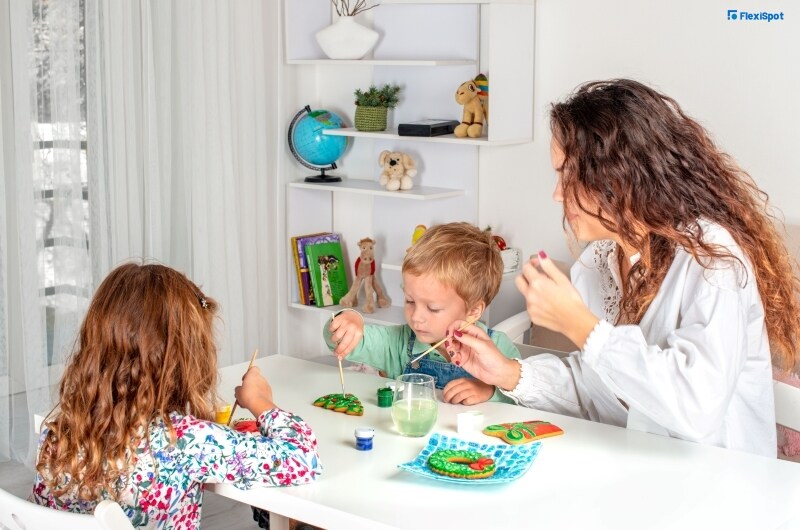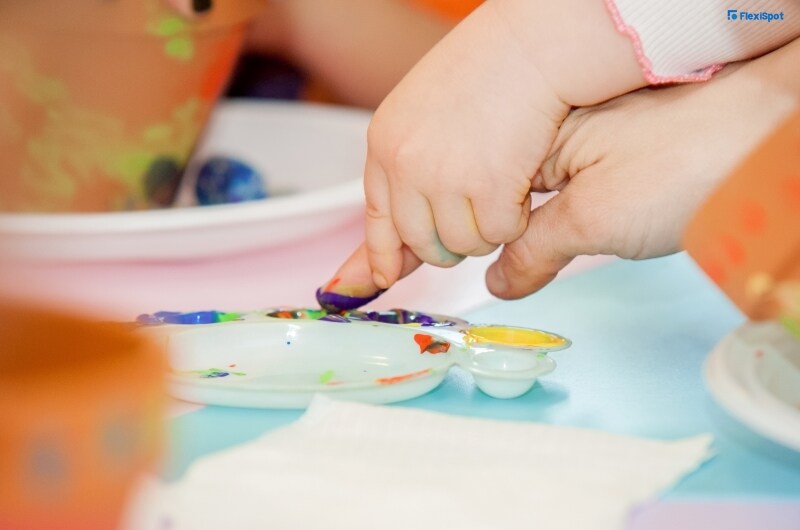Most parents introduce their kids to art at a young age.
It’s easy to go to a local bookstore and buy art materials to share a fun activity with the whole family. Aside from it being a fun way to bond, art also does a lot to help a child’s brain to develop. It stimulates creativity and assists in honing their motor skills. Simply scribbling is already a good way to start your kids with writing while having them hold pencils or markers tightens their hands’ grip and arms control.
Not only that, kids are able to express themselves through art in a way that they can’t communicate with words. The more they do it, the more confident they become with their skills. They also learn how to be patient and stay still while waiting for the paint to dry out. If for instance, something goes wrong with their quote-unquote masterpiece, the experience would make them familiar with the stress and how to positively respond to it. You also have to be focused and concentrated when making art which helps kids who are into it develop these core skills. Analyzing situations based on visuals is another skill a kid learns by making art. So overall, by making art, kids develop their working memory, mental flexibility, and self-control.

Assuming that the convincing above worked and you’re already planning a painting date with your toddler, then you should be warned that it would be anything but clean and smooth-sailing. Before even starting, make sure you have the following covered:
1. Prepare clothes that are okay to get dirtied. Rummage through your closet for an old oversized shirt, an apron, or an old piece of clothing. This is bound to be messy so don’t wear anything that you and your toddler value at the moment and would want to wear on a special occasion.
2. Cover your workstation with a newspaper. Since your kid will most likely be spilling water or paint anywhere, make sure that you have everything valuable covered. You don’t want clean-ups to be such a hassle or worse, might give you a negative experience. You also want your kid to be able to work freely even outside the designated artwork space.
3. Have nearby washing stations on standby. It’s better to be prepared so that your kid will have the best experience. Make sure you have napkins, rags, a paintbrush washing station, and other supplies ready in case your kid will need it. It’s much more convenient if everything is within arm’s reach.
4. Use paint that is child grade and non-toxic. Some paint materials have harmful chemicals so make sure your kid is not exposed to these by choosing a material that is safe for them. The recommended paint types are Watercolor, Child grade Acrylic, and Dry Gouache. If possible, choose a painting area with windows and doors.
5. Teach your kid how to clean up. After the painting session, make sure you don’t clean up yourself. Patiently teach your kid to wash off the paint in the brush and return the art materials where you keep them. Cleaning will serve as a good life lesson on discipline, cleanliness, and more.
6. Prepare a vacant wall or table to display your kid’s artworks. They will feel a sense of accomplishment if they see that you are proud and happy with your work. Don’t forget to put it up on display and show your visitors what your kid can do.

Painting Ideas
You might think it’ll be hard for your kid to paint because their hand coordination is developed just yet. But this is not the case; there are many ways a kid can creatively paint with you. Show your kids the paint you’ll be working with and let them choose what colors appeal to them. Give ample room for their young minds to think big, freely, and wildly. Just provide them with the materials and facilitate from the side. We gathered some painting ideas from the Internet that you can try with your kid:
Yarn painting
Get some yarn and dip it in paint. Ask your kid to move the yarn in the canvas to whatever direction he or she wants. You may expect the final output to be an interesting painting with different textures and dynamics.
Q-tip pointillism
Your kid may not know about impressionism just yet but let them be a kid and play. Provide Q-tips to dip in paint and try on a white canvas.
Hand painting
This may not be a new idea to you because many have been doing this for fun, adult or kid. Dip your inner palm in the painting and then press it on paper. Show your kid how it’s done or simply hold their hand and guide them. They can also do it with other parts of their body, given that the paint is safe and non-toxic for kids.
Marble Painting
Another fun way to paint is to have marbles, a bowl, an open cardboard box, and a white canvas. Prepare an open cardboard box and put your white canvas in position. On the other hand, fill the bowl with marbles. Dip the marbles in paint then roll them in the open box in whatever direction you want.
Body Tracing
Teach your kid the art of tracing by putting any part of their body to trace on a white paper. This is your way to teach kids the long-lost art form. Your kid will eventually trace any part of his body on a white paper. Your kid can trace any part of his or her body on a white paper. After tracing, you guys can experiment with paint and fill the body part with color.
Wheel and roller painting
It’s fun to roll paint onto paper so give your kid this one-of-a-kind experience. Buy a mini roller and let him or her have fun rolling paint onto paper. You may also opt to work on a bigger canvas for more space.
Spin painting
Get a salad spinner and put a paper plate or a circle paper cutout inside of it. Choose the paint colors your kid wants and guide him or her to put each one by one. Close the lid of the salad spinner and spin it as hard as you can. The final result is an interesting splash of color.

Height Adjustable Ergonomic Study Desk/Kids Desk
The Height Adjustable Ergonomic Study Desk/Kids Desk from Flexispot will be the perfect desk for your kid. With one touch of a button, the desktop height can be lowered and raised. It will allow your child to shift from sitting to standing or vice versa.
The desktop surface is waterproof and has rounded edges. This desktop resists stains and water damage so any dirt can easily be removed using a damp cloth to wipe it. The desk has a child-proof frame with anti-collision sensors so that you can be guaranteed that your kid is 100% safe.
